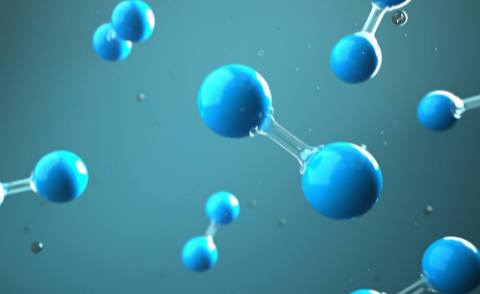The Science and Promise of Hydrogen in Modern Health Practices

Before diving into the details, here’s a quick outline of what this article explores. This table will help you navigate the broad scope of hydrogen-related health topics covered here.
| Section | Key Focus |
| Hydrogen’s Role in Human Biology | How hydrogen interacts with cells and tissues |
| Historical Context | Early use of hydrogen and oxygen technologies |
| Understanding the molecular hydrogen water machine | How it works and why it matters |
| Exploring the brown’s gas machine | Oxyhydrogen science explained |
| Documented Health Benefits | What research shows so far |
| Expanding Applications | Beyond drinking—therapy, skincare, performance |
| Safety and Practical Insights | Guidelines for safe adoption |
| Conclusion | A comprehensive look forward |
Hydrogen’s Role in Human Biology
Hydrogen is the lightest element in existence, yet it plays a surprisingly complex role in the functioning of the human body. Unlike other compounds or nutrients, hydrogen doesn’t act as a direct building block for tissues or enzymes. Instead, its contribution lies in its interaction with reactive molecules and its influence on cellular systems.
At the cellular level, hydrogen acts as a selective antioxidant. This means it reduces damaging free radicals like hydroxyl radicals while leaving beneficial oxidants, which help regulate immune defense and signaling, untouched. This selectivity is critical. Many conventional antioxidants, such as vitamin C or beta carotene, lack this precision. They neutralize both good and bad oxidants, which can sometimes interfere with essential metabolic pathways.
Hydrogen’s tiny molecular size also sets it apart. It can permeate cellular membranes, reach mitochondria, and even cross the blood-brain barrier. This gives hydrogen an edge in supporting neurological health, a capability that very few other molecules possess. Emerging studies indicate it may protect neurons from oxidative stress, one of the root contributors to degenerative conditions.
Another layer of its biological impact involves gene expression. Laboratory studies suggest hydrogen may influence genes tied to inflammation, apoptosis (programmed cell death), and energy metabolism. While this research is still in its early stages, it highlights how hydrogen may not simply act as an antioxidant but could also serve as a regulator of critical cellular processes.
Understanding hydrogen’s versatility at the biological level is the foundation for appreciating the technological innovations that harness it for health.
Historical Context
Although modern science is only recently unlocking hydrogen’s therapeutic potential, the use of hydrogen-related technology dates back much further. The story is a blend of industrial discovery, medical experimentation, and renewed curiosity.
Hydrogen was first isolated in the 18th century, and soon after, its explosive properties drew attention in engineering and industry. By the 19th century, scientists had already begun experimenting with hydrogen and oxygen mixtures, recognizing both their risks and their potential. One of the earliest known applications of such mixtures was in flame welding, where hydrogen-oxygen gas provided a high-intensity flame.
The transition from industrial to medical application took time. In the mid-20th century, scientists experimented with hyperbaric oxygen therapies and variations of oxyhydrogen gas delivery in attempts to support wound healing and recovery from trauma. Although many of these trials were rudimentary by today’s standards, they planted the seed for later investigation into how controlled hydrogen delivery could benefit biological systems.
The modern rediscovery of hydrogen in health contexts began in the early 2000s, when Japanese researchers published groundbreaking studies showing how hydrogen gas inhalation could protect against oxidative stress in animal models. This sparked a wave of new research and the eventual development of consumer devices designed to bring hydrogen’s potential into daily wellness practices.
Today, hydrogen health technology sits at the intersection of historical curiosity and modern biomedical innovation. Devices such as water machines and Brown’s gas machines represent decades of engineering refinement combined with contemporary scientific exploration.
Understanding the Molecular Hydrogen Water Machine
The molecular hydrogen water machine is one of the most direct ways to integrate hydrogen into daily life. Instead of complex procedures or clinical settings, this device delivers dissolved hydrogen in ordinary drinking water.
The underlying principle is electrolysis, where water molecules are split into hydrogen and oxygen by passing an electric current through them. In these machines, the hydrogen produced is dissolved into the water while the oxygen is safely vented away or directed to another chamber. The result is hydrogen-rich water that looks, tastes, and feels like regular water but contains therapeutic hydrogen molecules.
From a technical standpoint, the machine must achieve a balance between hydrogen concentration, stability, and safety. Too little hydrogen and the therapeutic effects may be minimal. Too much and the water may not retain stability. Advanced devices use special membranes and electrode designs to optimize the dissolved hydrogen content while ensuring long-term durability.
Health researchers are particularly interested in hydrogen water because it integrates seamlessly into everyday routines. Drinking water is already an essential part of life, and infusing it with hydrogen requires no behavioral change. Individuals simply hydrate as usual, but with water that carries additional biological benefits.
Early human studies suggest hydrogen-rich water may help reduce fatigue, lower biomarkers of oxidative stress, and support exercise recovery. While more extensive trials are needed, the accessibility of this method makes it an attractive option for both researchers and consumers exploring hydrogen’s potential.
Exploring the Brown’s Gas Machine
While hydrogen water focuses on ingestion, the brown’s gas machine takes a different approach by generating a gas mixture of hydrogen and oxygen, also known as oxyhydrogen. This gas can be inhaled under controlled conditions, delivering hydrogen directly to the respiratory system.
The machine again relies on electrolysis, splitting water into its elemental components. Unlike pure hydrogen delivery systems, Brown’s gas preserves the oxygen alongside hydrogen in a stoichiometric ratio. This combination has unique implications for health. Hydrogen serves as the selective antioxidant, while oxygen supports cellular respiration. Together, they may provide a dual-action effect that addresses oxidative stress while reinforcing energy production.
Historically, Brown’s gas was used for high-heat industrial processes. Its adoption in health care is more recent and requires far stricter safety measures. Inhalation systems must carefully regulate gas flow, maintain purity, and ensure stability to prevent risks. Modern machines often incorporate safety valves, humidifiers, and flow controllers to make the process consistent and reliable.
Clinical interest in Brown’s gas therapy is expanding. Preliminary studies are examining its potential in conditions ranging from metabolic disorders to neurological challenges. Some trials even explore its role in postoperative recovery, where managing oxidative stress is vital. Though results are early and more research is needed, the possibility of inhaled hydrogen-oxygen therapy has opened a new dimension in integrative health.
The distinction between water-based delivery and inhalation underscores hydrogen’s versatility. While the molecular hydrogen water machine provides subtle, daily support, Brown’s gas machines allow for targeted interventions in specific contexts.
Read Also: Survival Gear Essentials: Integrating Water Filtration Into Your Outdoor Kit
Documented Health Benefits
The therapeutic interest in hydrogen is not speculative; it is grounded in growing research across multiple health domains. Although the field is young, published studies and clinical trials suggest hydrogen could impact both everyday wellness and more serious conditions.
Here are some of the most explored benefits:
- Oxidative stress reduction: Hydrogen selectively neutralizes harmful free radicals, potentially slowing cellular aging and reducing risk factors linked to chronic disease.
- Anti-inflammatory effects: By influencing pathways like NF-κB, hydrogen may downregulate inflammation that underlies autoimmune and metabolic disorders.
- Metabolic support: Some studies link hydrogen therapy to improved insulin sensitivity and lipid metabolism, highlighting its potential in addressing diabetes and obesity.
- Neuroprotection: Hydrogen’s ability to cross the blood-brain barrier positions it as a possible ally in preventing or managing neurological conditions tied to oxidative stress.
- Exercise performance and recovery: Athletes have shown interest in hydrogen water and inhalation therapies as methods to decrease muscle soreness, shorten recovery time, and maintain endurance.
- Skin health: Topical hydrogen applications are under investigation for their potential to reduce wrinkles, improve hydration, and soothe irritation caused by oxidative stress.
These benefits are not yet definitive medical claims. Most research is still in early stages, with small sample sizes and limited long-term data. However, the convergence of findings across multiple domains adds weight to the idea that hydrogen deserves continued scientific attention.
Expanding Applications
Hydrogen’s adaptability is one of its most compelling features. Beyond drinking hydrogen-rich water or inhaling hydrogen gas, researchers and innovators are experimenting with new delivery systems tailored to specific needs.
Topical therapies are gaining attention. Hydrogen-infused creams, gels, and sprays are designed to combat oxidative damage in the skin directly. Early trials suggest such products may help with conditions like eczema, acne, and photoaging. The skin, being the body’s largest organ, presents an obvious target for localized hydrogen therapy.
Immersion therapies, such as hydrogen baths, are another creative application. By dissolving hydrogen into bathwater, the entire body is exposed to hydrogen molecules. Users report benefits related to relaxation, circulation, and skin vitality. Scientists are investigating whether immersion allows hydrogen to diffuse into systemic circulation through the skin.
Sports science is another frontier. Hydrogen-infused beverages, post-training baths, and inhalation protocols are being tested in elite athletic programs. The potential to reduce oxidative stress without interfering with beneficial training adaptations is of particular interest to coaches and athletes.
Even medical-grade applications are under review. Researchers are studying how hydrogen delivery might support post-surgical recovery, cardiovascular health, and even organ transplantation. While consumer-level products provide everyday benefits, medical-grade interventions could transform patient care in the future.
Safety and Practical Insights
Despite its promise, hydrogen therapy requires thoughtful application to ensure safety and maximize benefits. Fortunately, most forms of hydrogen delivery, when properly managed, have shown strong safety profiles.
For hydrogen water machines, safety considerations are minimal. The dissolved hydrogen concentration is well within tolerable limits, and drinking hydrogen water poses no known risks. Devices are engineered to regulate output and maintain purity, further reducing concerns.
Brown’s gas machines, however, require more caution due to the inhalation route. Proper device design is crucial. Features such as flame arrestors, pressure regulators, and controlled flow systems prevent accidents. Users must follow manufacturer guidelines closely and avoid improvising with untested systems.
It is also important to emphasize that hydrogen therapies are not replacements for medical treatment. While the research is promising, it is still emerging. Individuals with chronic conditions should consult healthcare professionals before integrating hydrogen into their routines. The best approach is to view hydrogen as a complement to—not a substitute for—evidence-based medical care.
Practical adoption often depends on personal goals. Someone seeking general wellness might gravitate toward a hydrogen water machine for daily hydration, while individuals exploring targeted recovery strategies may find Brown’s gas inhalation more compelling. The versatility of hydrogen delivery means there is no single “best” method, but rather a spectrum of options tailored to individual needs.
Conclusion
Hydrogen’s story in health is still being written, yet what has already emerged is remarkable. From its basic role as the universe’s simplest element to its sophisticated potential in cellular health, hydrogen exemplifies how small things can have profound impacts. Modern technology—whether in the form of water machines or Brown’s gas devices—has transformed abstract science into practical applications accessible to both researchers and individuals.
The benefits under investigation are wide-ranging: from combating oxidative stress and inflammation to supporting metabolism, neurological health, and exercise recovery. Applications continue to expand, moving from water and gas inhalation into skincare, immersion therapies, and athletic performance science. At every stage, the emphasis is not on replacing existing medical treatments but on complementing them with innovative, low-risk support.
What makes hydrogen particularly exciting is its versatility and accessibility. Unlike complex pharmaceuticals or invasive procedures, hydrogen can be integrated into simple, everyday practices—whether through drinking water or controlled inhalation. This accessibility has the potential to democratize health innovation, making cutting-edge science available to broader populations.
However, it is essential to balance enthusiasm with caution. The field is young, and rigorous, large-scale clinical trials are still needed to establish definitive therapeutic roles. Users should approach hydrogen with curiosity and responsibility, seeing it as part of a holistic approach to wellness rather than a miracle solution.
In the years ahead, hydrogen research will likely expand, uncovering new applications and refining delivery methods. The trajectory suggests a future where hydrogen is recognized as a key tool in the broader landscape of integrative health science. For now, hydrogen stands as a fascinating example of how the simplest element in the universe may hold profound promise for human well-being.






